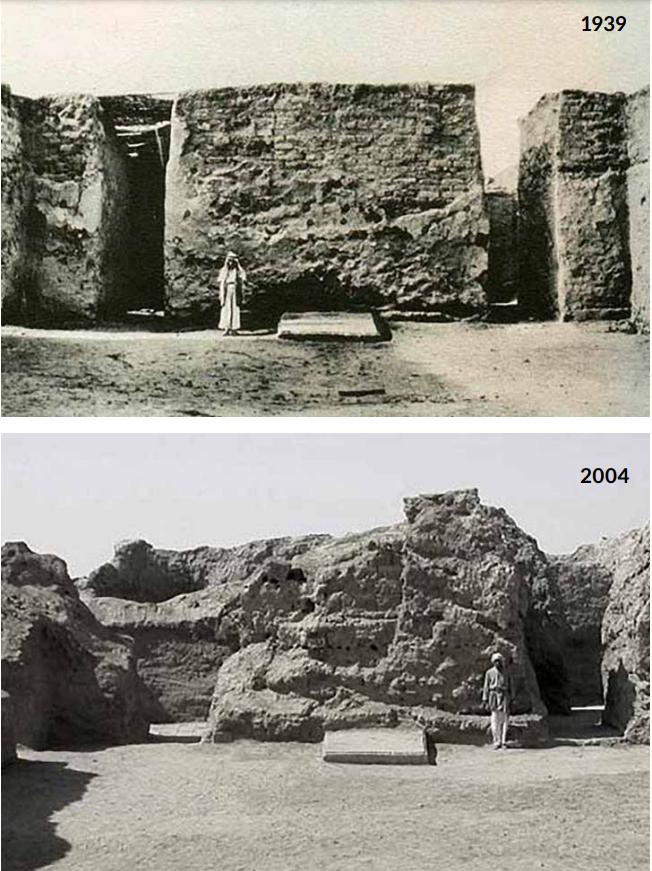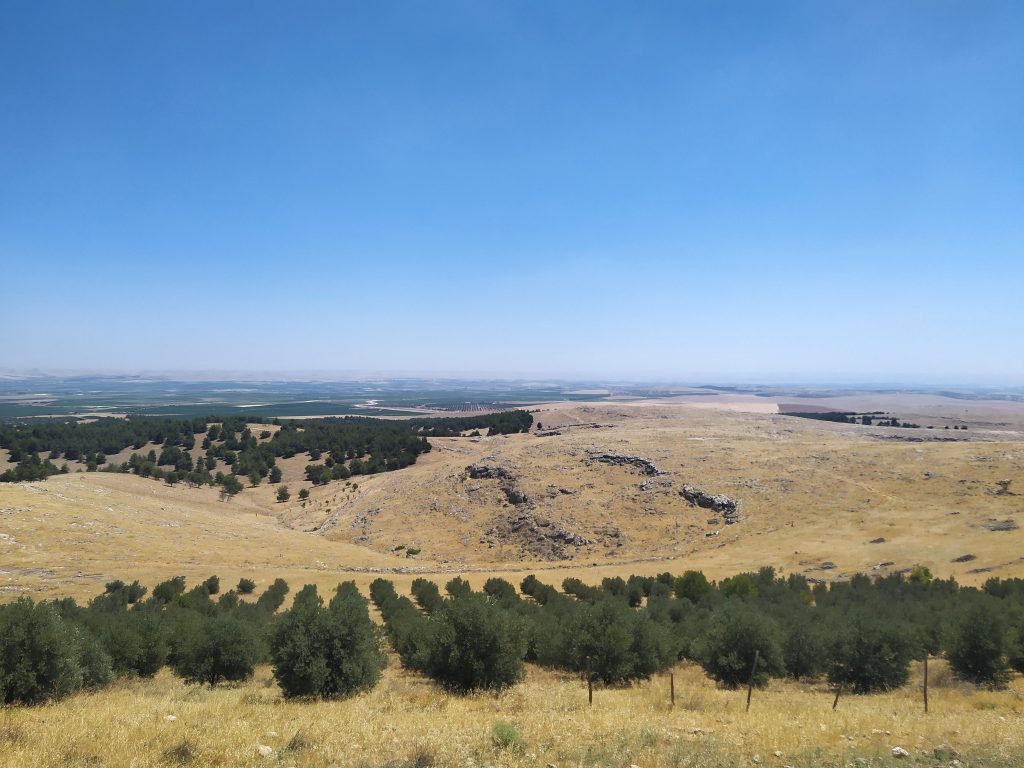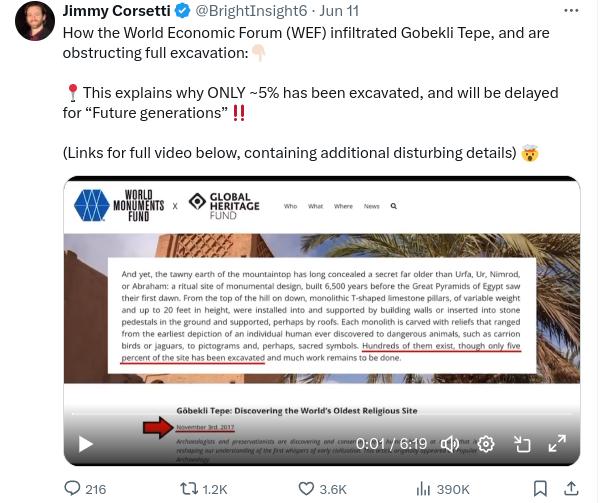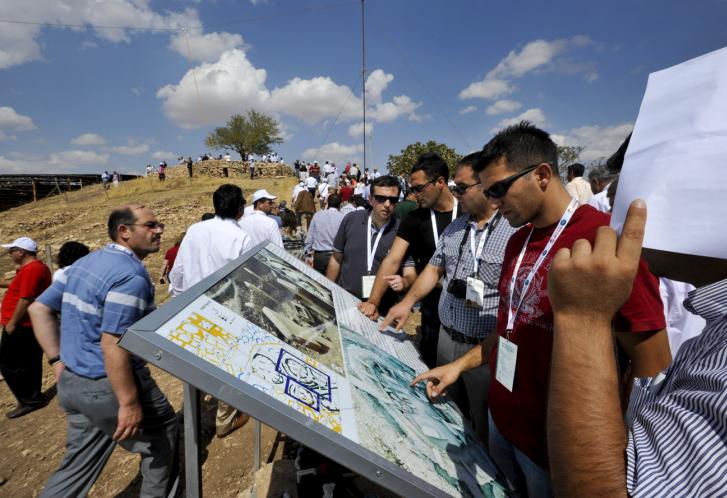
When most people think of archaeology, they envision an excavation: but site preservation and curation is often overlooked.
It’s easy to envision an archaeological dig: just think square holes in the ground, with people variously digging with small trowels, brushing away dirt from an artifact, standing on the side sketching a map or taking photographs, someone looking through a survey device at a point on the ground, and so on.
But, what might surprise the non-archaeologist, is how intense and involved the non-excavation part of archaeology really is.
First, sites are rarely completely excavated. On those rare occasions it’s because the site is in danger of being lost. This could be due to either man or mother nature. A historic structure on a marine coast might be in danger of being inundated, swept out to sea, or eroded into a bay because of climate change or recent storm erosion of a beach. Maybe there’s a highway project going through the site. Or maybe a valley is about to be flooded due to the construction of a new dam.
Those are each good reasons to excavate a small site completely because doing nothing ensures that we don’t destroy the last remnants of a culture or society before something comes along and obliterates the site to the point that no information can be gained.
Second, a rule of thumb I like to follow is: with every hour in the field, there are one to two hours that need to be spent in the office. This is analyzing artifacts, cataloging documents, artifacts, photos, sketches, etc, then writing reports, site records, or transcribing logs. And, when it comes to artifacts recovered, this is an entirely different beast altogether.
Artifacts and samples need to be accessioned, photographed, measured, weighed, categorized, then bagged or packaged for curation. Or storage.
Third, there’s what to do with the features of the site that weren’t portable enough to move to a curation facility? How do we protect them from the elements? Incised stone can weather, particularly if it’s limestone (rain has a high enough pH to breakdown the calcium-carbonate molecules can cause limestone to erode). Ultraviolet radiation from the sun can discolor and deteriorate artifacts and features of a site as well as bleach flint tools and degrade adhesives used by ancient people if they still exist.

Directorate-General for Antiquities and Museums
Fourth, there’s significant problem of visitation. Soil compaction, litter, looting, oils from touching, vegetation degradation from walking, erosion from walking and lack of vegetation root systems which hold soils together, increased relative humidity, accidental damage, introduction of invasive species of plants/animals, and the cumulative effects of one or more of these and many more risks have to be expected with human tourism and visitation.
Enter the Conspiracy Nutter
In recent days, conspiracy theorist and pseudoarchaeology proponent Jimmy Corsetti began creating videos and tweets regarding some grand conspiracy to suppress the archaeology of Göbekli Tepe and other sites. He initially appeared to be confused about what site preservation steps like backfilling are used for. And unable to conceive of the importance for not being greedy when it comes to site excavation.
Then he moved on to “why were trees planted on top of the ruins” and then finally to extreme conspiratorial mode by insisting that the “World Economic Forum has infiltrated Göbekli Tepe and are obstructing full excavation.” As an anti-vaxxer and conspiracy-monger, it’s easy to see why any involvement of the WEF with Göbekli Tepe would trigger him.
In recent years, the WEF has become a lightning rod for disinformation and “conspiracy theories that are rooted in the claim that the annual gathering is a nefarious plot by ‘globalist elites’ to seize power.” And it that, in turn, probably has its roots in disinformation surrounding the economic recovery plan that the WEF devised post-COVID. A plan to prioritize sustainable development that would allow economic recovery now that wouldn’t compromise future economic growth.
All those big words lead small minds to concoct conspiracies. Hence Corsetti’s position.
The Damage at Göbekli Tepe
By 2019, archaeologists discovered that the terrazzo floors, which initially presented with a polished surface after excavating, were eroding after being exposed. This was because of the dissolution of the mortar matrix through moisture (rain, snow, an relative humidity), releasing the stones from their more uniform context.
This was one of many site changes that were happening to Göbekli Tepe because of excavation and being open to the elements and people. In 2020 alone, visitation to Göbekli Tepe was over 850,000. Needless to say, this is a risk to the site. Yet exposure of this and other archaeological sites to the public is vital if for education and awareness alone.
So What’s the Plan?
The management plan for Göbekli Tepe is freely and publicly available for all to see. Contrary to insistence that there’s some “conspiracy” at work. Moreover, the plan is laid out logically and reasonably in accordance with modern methods and theories surrounding conservation, preservation, and management of cultural resources.
Corsetti, not educated in cultural resource management, might be forgiven for his ignorance if not for the many archaeologists who chimed in with explanations. Some of them worked directly at Göbekli Tepe. Rather than swallow a bit of pride and graciously thank them for providing valuable and insightful information, Corsetti doubled down and stuck with the conspiracy.
This indicates he’s either an idiot (and I don’t think he is) or he just wants the clicks that a good conspiracy nutter can get in the way Alex Jones does best: by lying and cheating anyone that will dare listen to him.
Management of Archaeological Sites
The roof is probably one of the single best additions, though it isn’t as effective as backfilling. When recording is done at an excavation unit, it’s typically backfilled. Often by including a layer of permeable geotextile that creates a barrier for the backfill, which is distinct from the surrounding strata and devoid of organic material. This will demarcate the boundary between excavated and un-excavated matrix.
Backfilling prevents erosion of the site, bleaching by the sun, chemical weathering by acid rain, looting, and physical damage by machinery, people, etc.
In 2018, Klaus Schmidt’s widow claimed there was damage caused by heavy equipment and poured concrete as the new walkway was constructed. This turned out to be incorrect. The walkway to the roofed area was first lined with a geotextile, then a 30-cm layer of sterile matrix to act as a mortar for stone cubes laid for the walkway. This avoids the need for leveling the surface for concrete or the pouring of asphalt. Stone cubes are easily maintained, removing one at a time for replacement.
The walkway under the roof is supported by the frame of the roof, not touching the excavation area. While concrete was used for post piers of the roof, it was done smartly. The concrete was poured into augered holes pre-lined with a geotextile to prevent the concrete from interacting with the surrounding strata.
While there is a potential risk to underlying archaeological features, it’s minimized by targeting bedrock locations between walls and structures of the site. And, short of backfilling the site completely, this eliminates far more risk than it creates.
What About Those Trees?
The trees were planted back when the site was still private land. Still, it’s probably not a bad idea since the roots will prevent erosion of the land and help preserve the site. While Corsetti claims the trees are “incredibly destructive,” this is just wrong. Tree roots of most species span about 15-50 cm. These look like olive trees to me, though I’m probably wrong. But if they’re olives, this is a very good thing.

Image by Radoslaw Botev, CC BY 3.0 pl
Olive roots are generally horizontal and not considered invasive or damaging to infrastructure. They just don’t go deep enough. But they do keep soils from eroding or slumping during rain, snow, or tectonic movements.
What? No More Excavations After Only 5%?
This is perhaps Corsetti’s main beef. If he really has one.
Corsetti goes out of his way to point out to everyone that only 5% of the site is excavated, leaving (gasp) 95% to go! Why, he asks, are we leaving it for future generations?
The short answer is probably not funding. It’s curation and context.
But it’s also part of the Göbekli Tepe Site Management Plan:
Whilst there is a clear and legitimate desire to expose and to study the archaeological resources of the tell, excavation of Göbekli Tepe should also be kept to the minimum necessary to understand the Site and to make it accessible for the public. The bulk of Göbekli Tepe’s buried material cultural heritage should remain untouched and protected by the tell and thus preserved for future generations to investigate and
admire.
Curation
Curation of artifacts and features uncovered is no easy feat. As mentioned above, if you don’t backfill, you have to mitigate (like the roof and walkway above). And this mitigation requires maintenance and monitoring in perpetuity. Which does cost money, so funding is definitely an issue.
But the bigger issue is probably curation and research of all that’s was uncovered to date. There are probably hundreds of thousands of artifacts bagged and boxed waiting to be processed, analyzed, and contextualized by the research teams. Plural. I’m sure there’s more than one team since people are interested in so many different aspects: lithics, ethnobotany, coroplastic studies, ceramics, etc.
In addition to being accessioned and cataloged, then analyzed, all this stuff has to be stored. And monitored. And secured. And regularly inventoried (which is really part of the monitoring process). There are computer databases to update. Photos to take. Logs and field notes to copy and scan, then enter in their own database that links relationally to everything else.
And the buildings need to be secured, and It needs to be climate controlled…
And you get the idea. But all this is in perpetuity: that state or quality of lasting forever.
So, at some point, you have to slow your roll. Or you just end up with piles of stuff and no one to sort it all out or anyplace to store it effectively.
Context
I’m not an archaeologist working in Turkey or Mesopotamia. But I have to wonder if a good practice is to not focus so much on a single site (Göbekli Tepe). And take a look at some other sites that have a potential to add context.
At Karahan Tepe, at least 266 T-shaped pillars with animal reliefs like insects, birds, and snakes were found. Already discovered at Karahan Tepe is a unique winter solstice alignment and it has more depictions of humans than discovered so far at Göbekli Tepe. But they are less than 50 miles away and generally contemporaneous, though Karahan Tepe seems to be about a thousand years older.
There is a rich prehistory of Neolithic culture in the entire region and focusing on a single site can ensure that valuable contexts are completely missed.

Conclusion
There is probably so much more to unpack about Corsetti’s grandiose conspiracy theories. But why bother? He’s either a full-on conspiracy nutter in need of a tin-foil hat collection or he’s a grifter looking for easy clicks. Clicks he’ll get by riling up viewers and readers that don’t spend enough time reading broadly enough to see past the grift.
My sense is that he’s just spoiling for a fight with archaeologists on Twitter. A colleague recently suggested he’s looking for an enemy to boost his clicks. I said he probably thinks he’s a hero looking for a nemesis, but the reality he’s a nemesis in need of a hero.
Regardless, there is so much more to say about cultural resource management and curation that entire books and papers were written on the subject.
References and Further Reading
CC BY-SA 4.0
CC BY 4.0
CC BY 3.0 pl
Schmidt, Leo, Anja Mebach & Smriti Pant (2017) Göbekli Tepe Site Management Plan German Archaeological Institute, Göbekli Tepe Project.
Skedzuhn-Safir, Alexandra. (2021) The protection of archaeological heritage. The case study of Göbekli Tepe, Turkey. In: Best Practice Handbook on Sustainable Protection of Cultural Heritage – case studies. Project UNINET: University Network for Cultural Heritage – Integrated Protection, Management and Use, 107–128.



Leave a Reply
You must be logged in to post a comment.